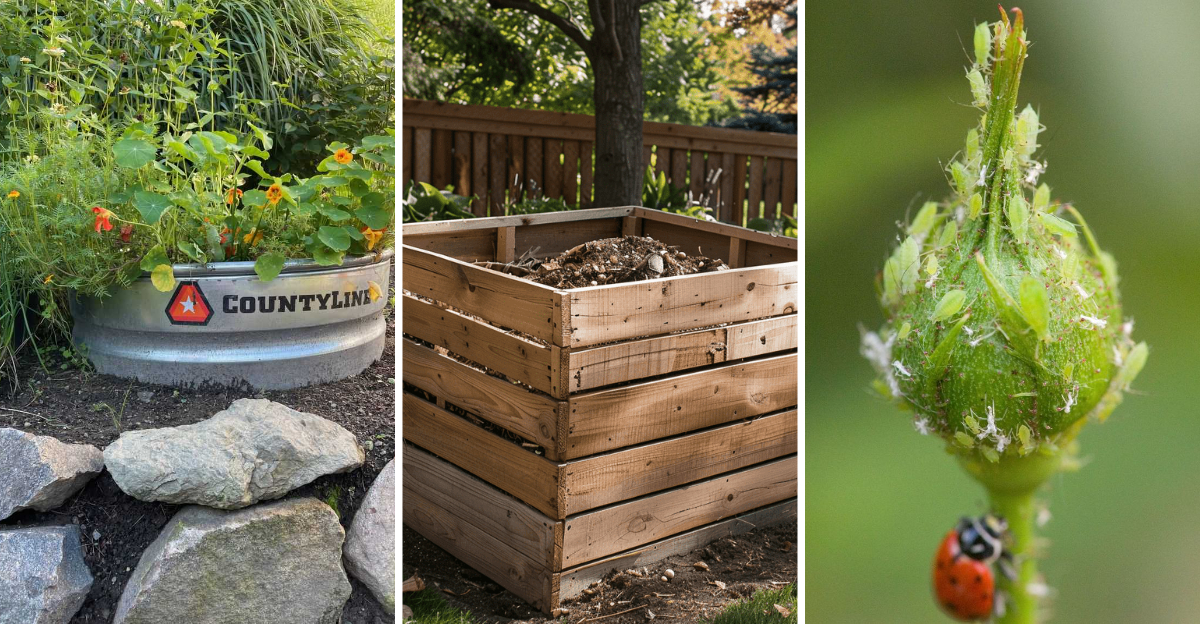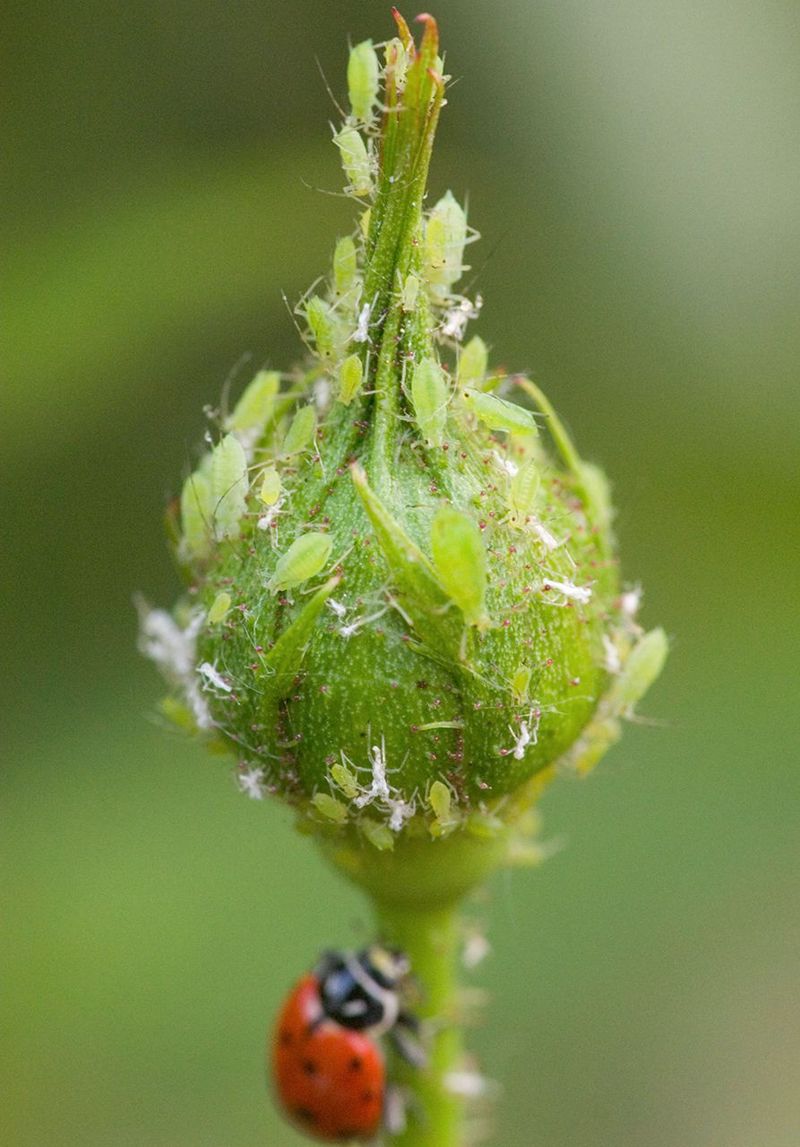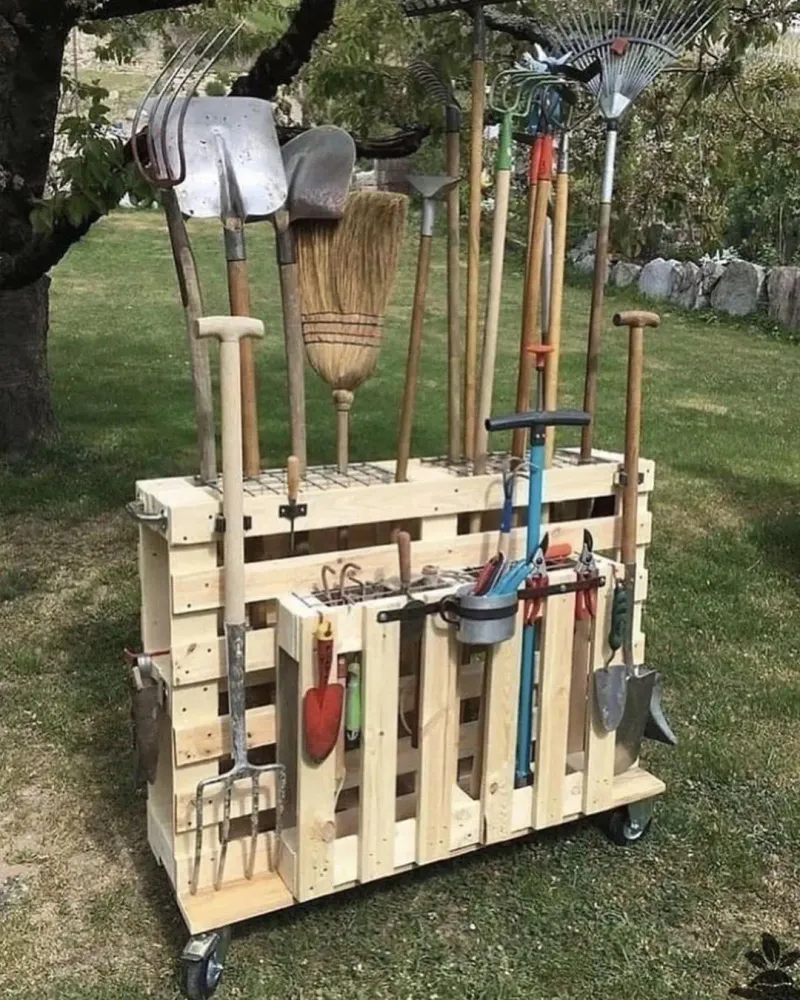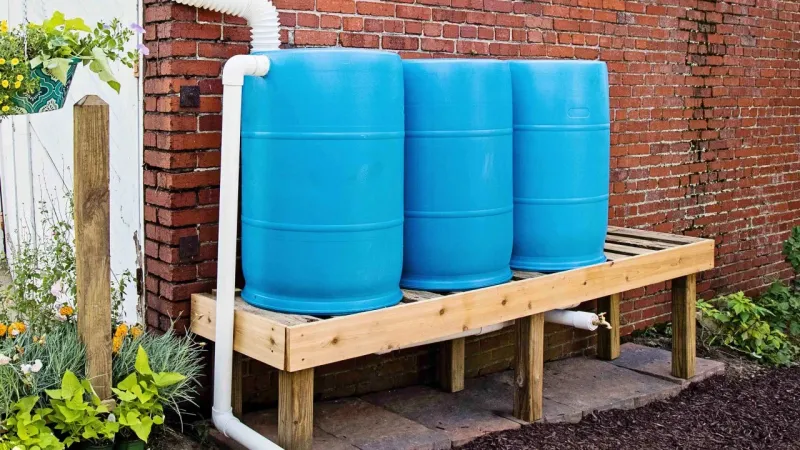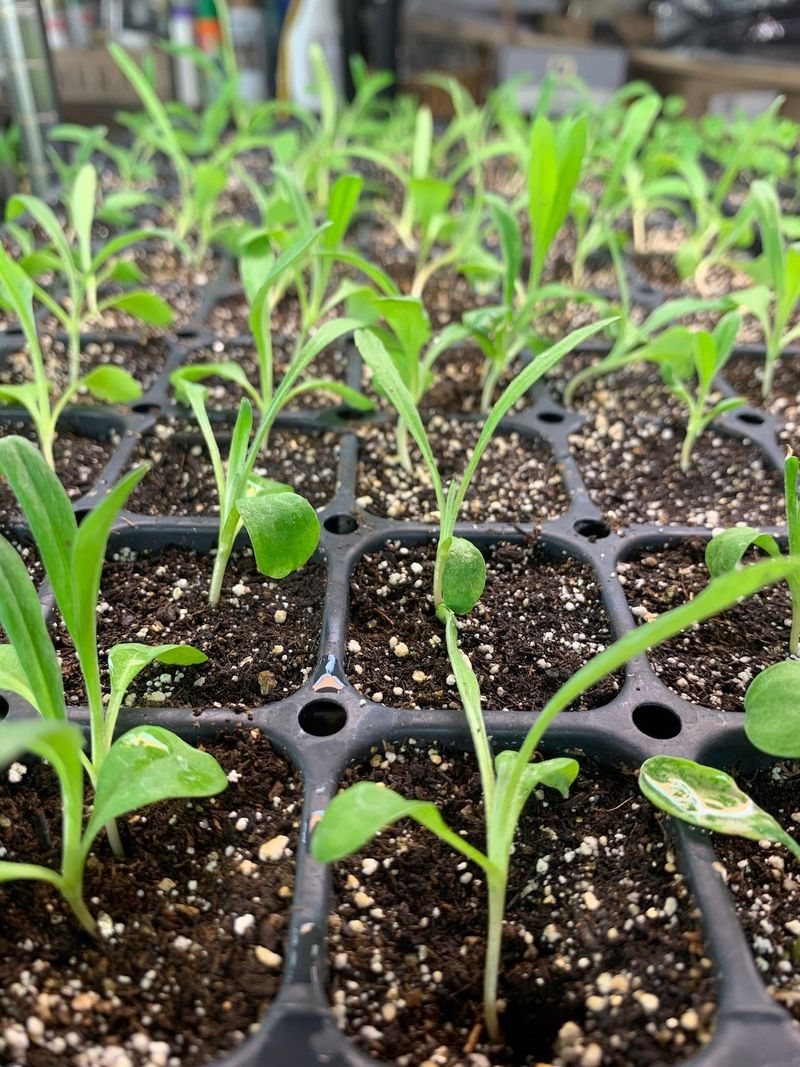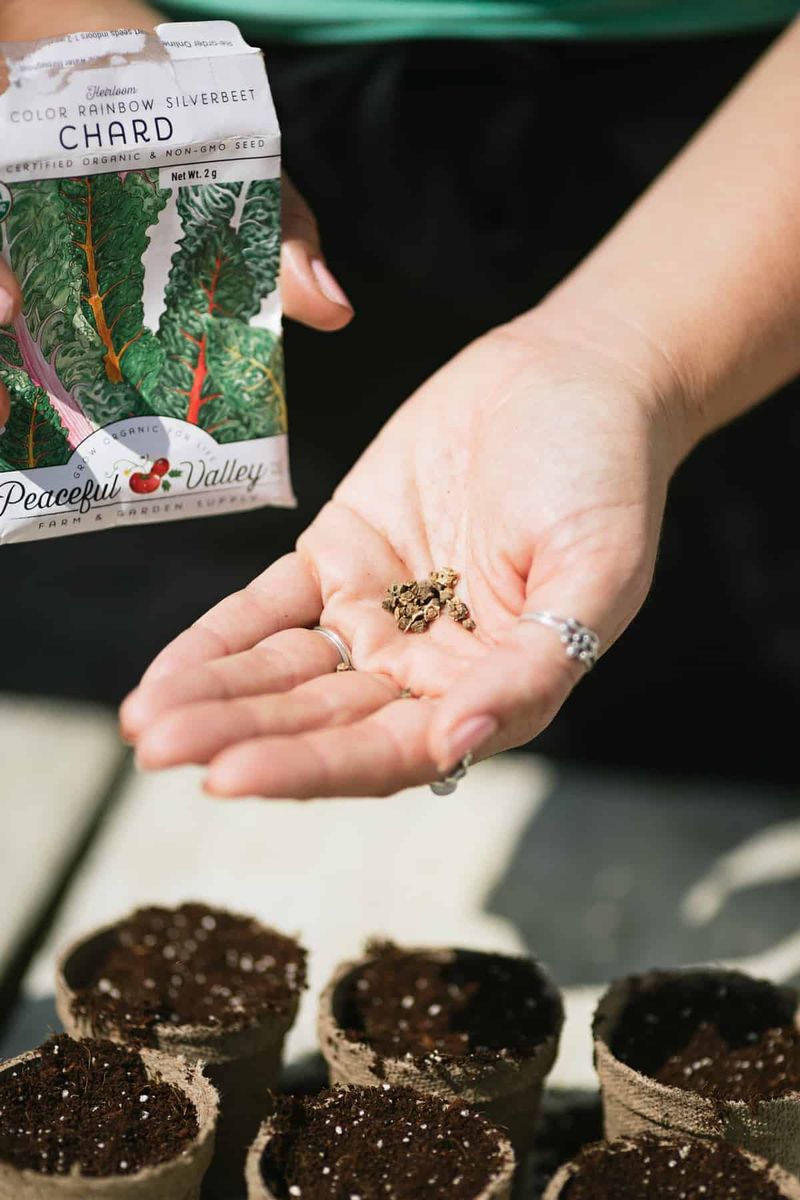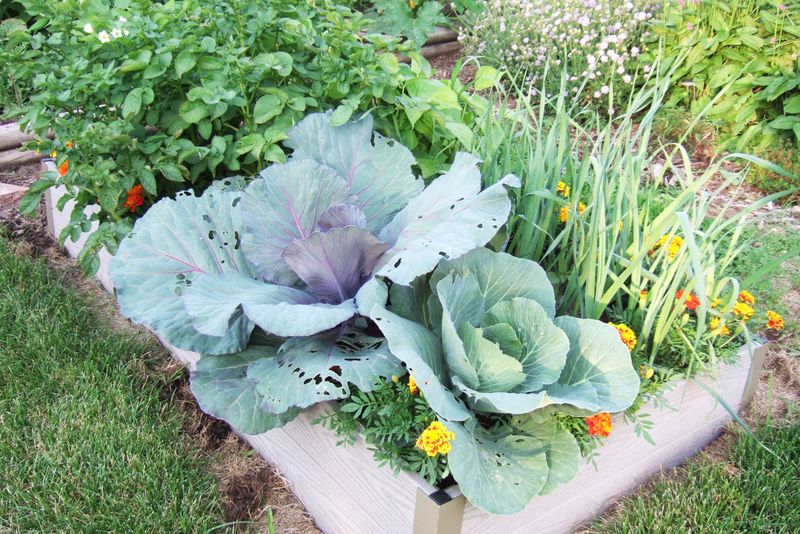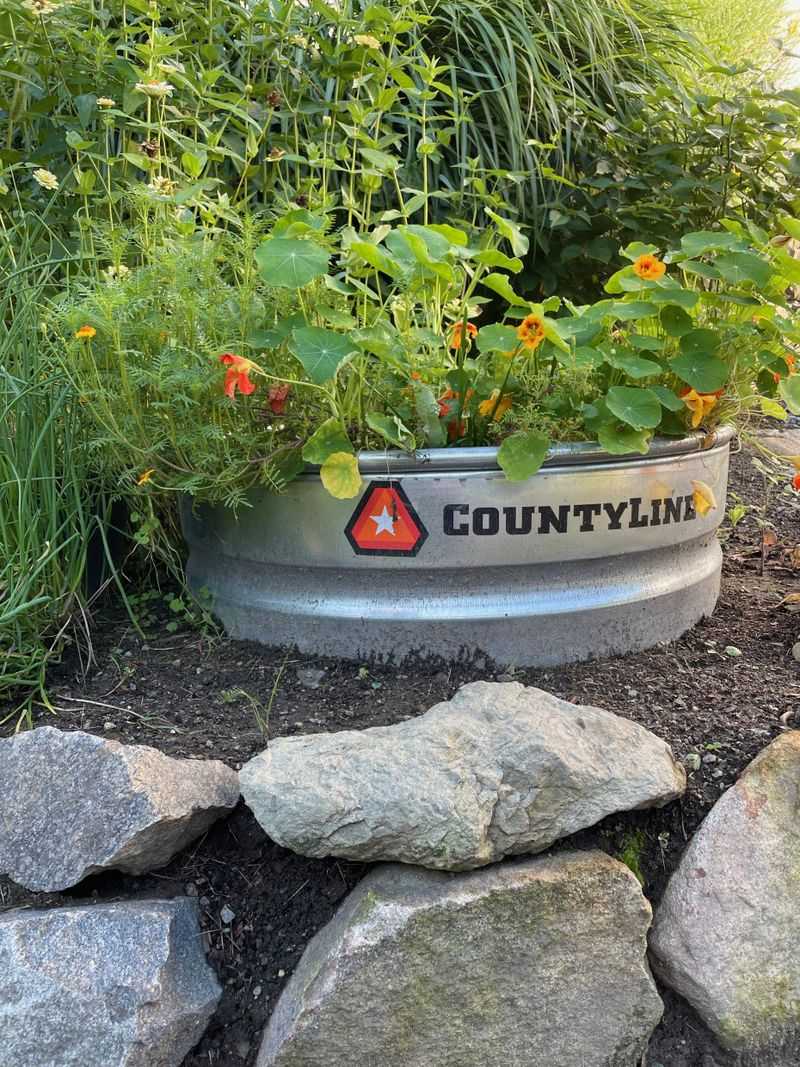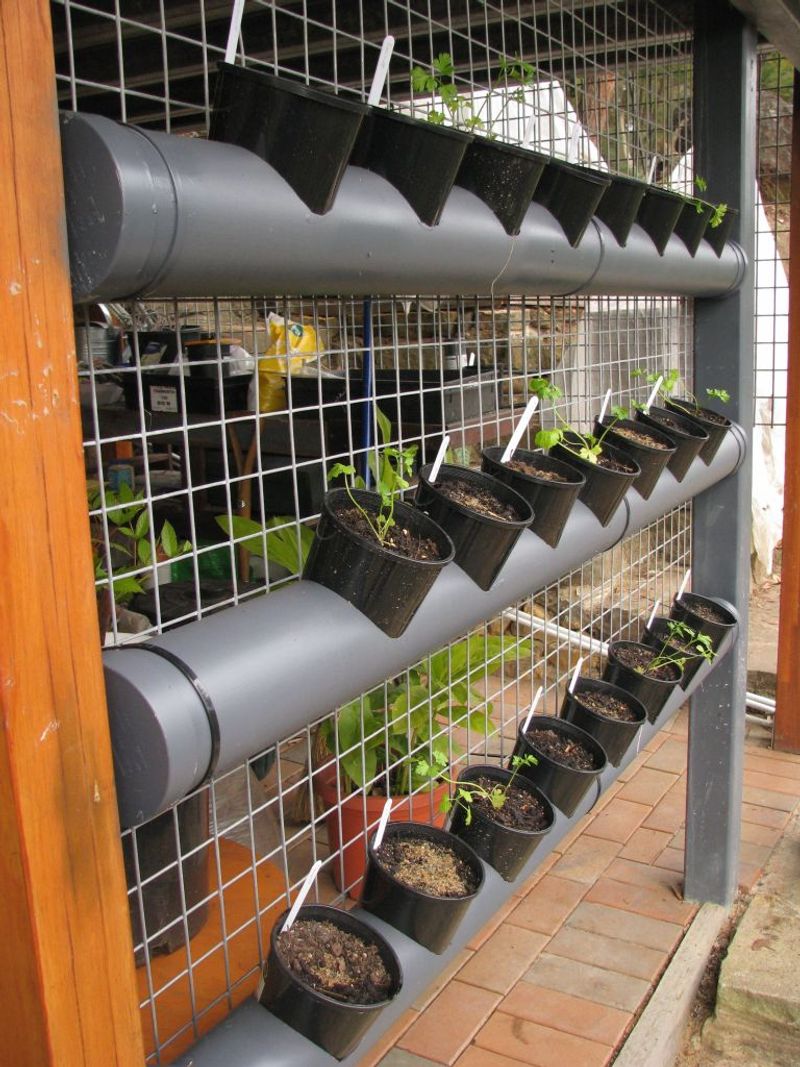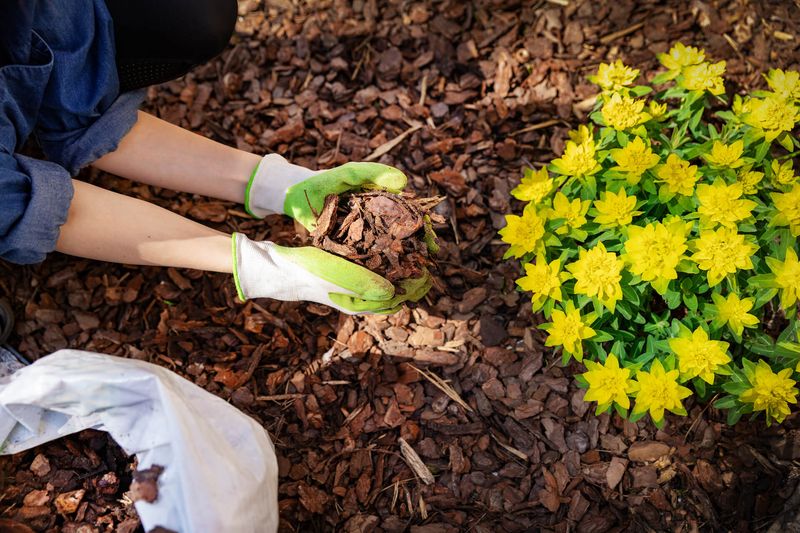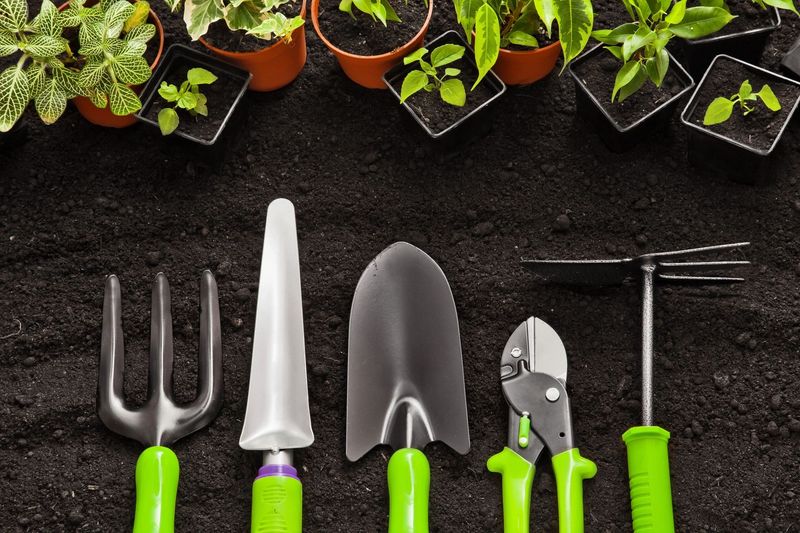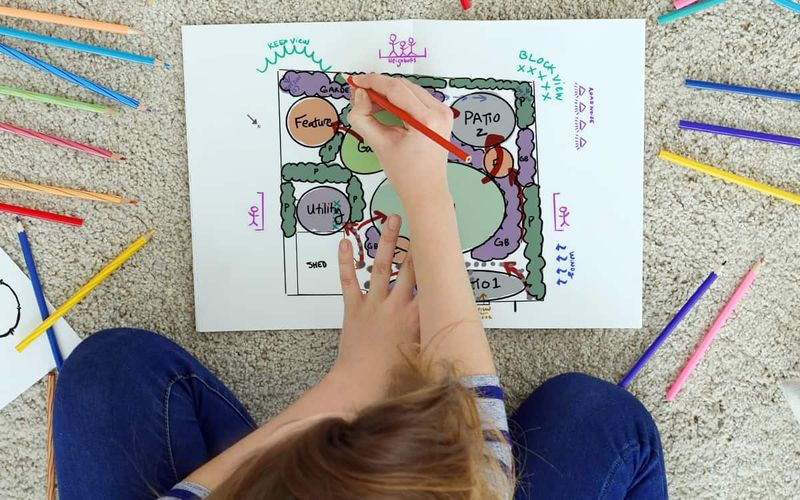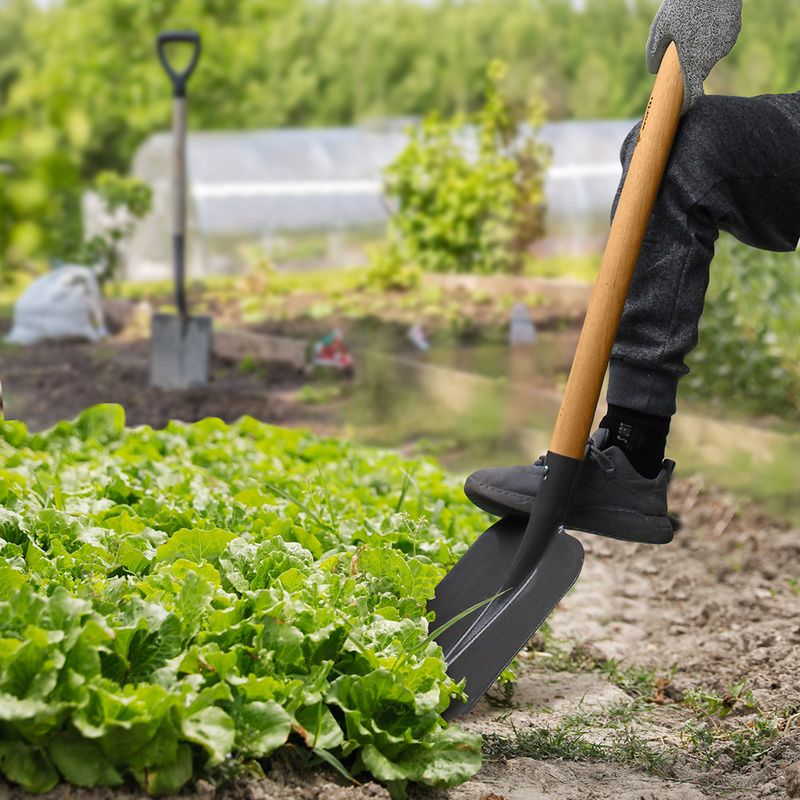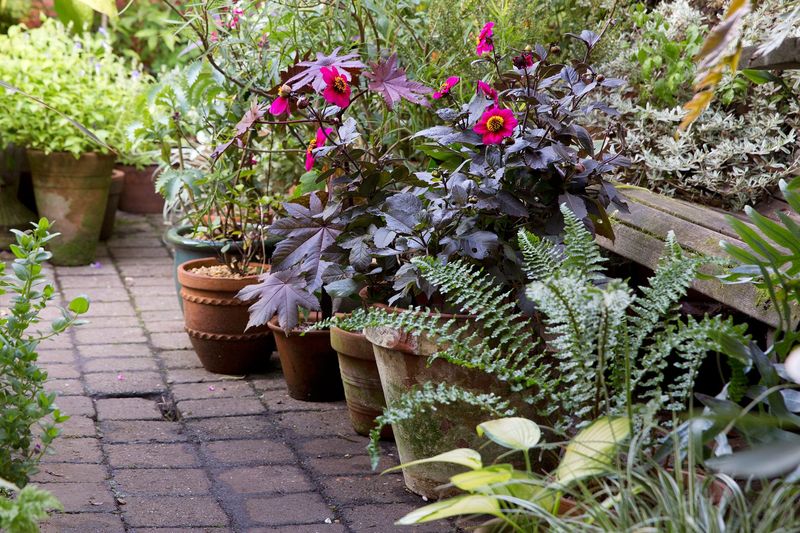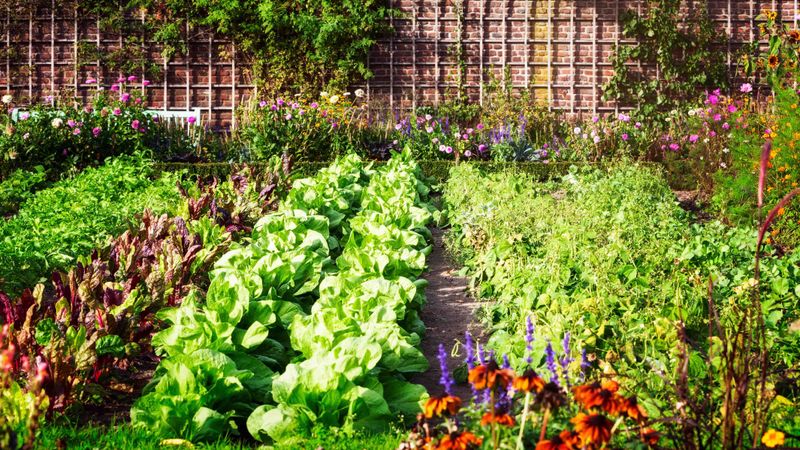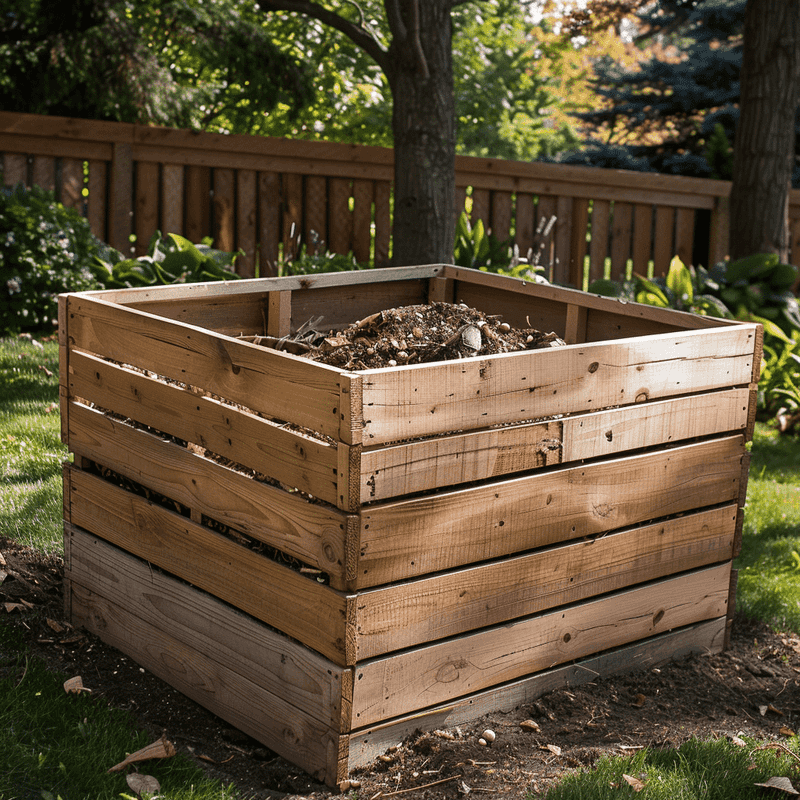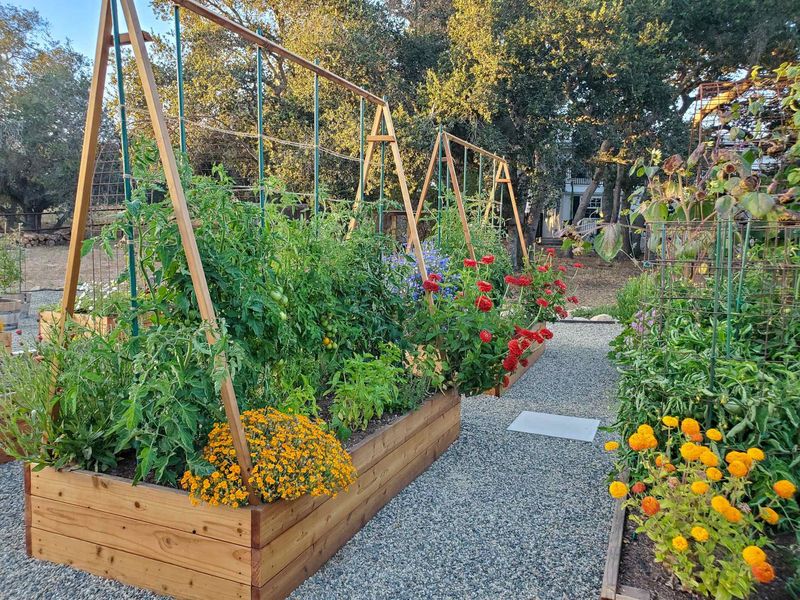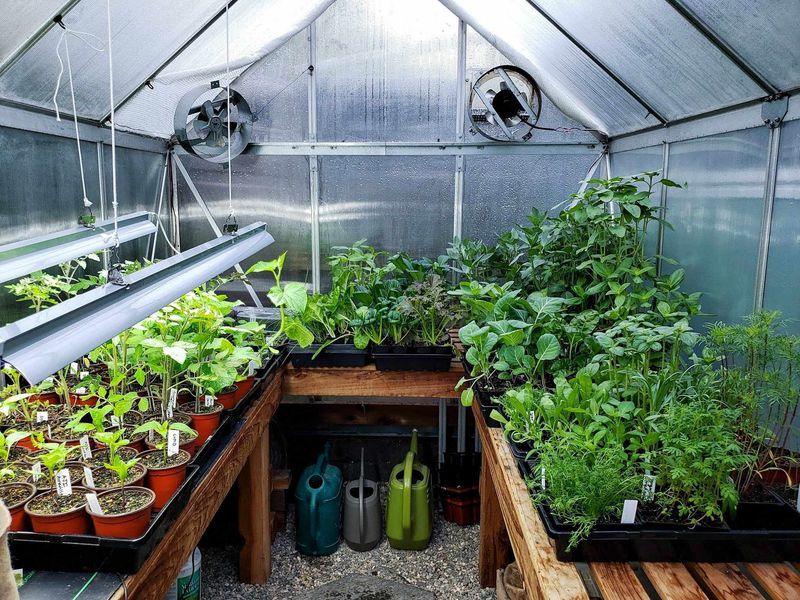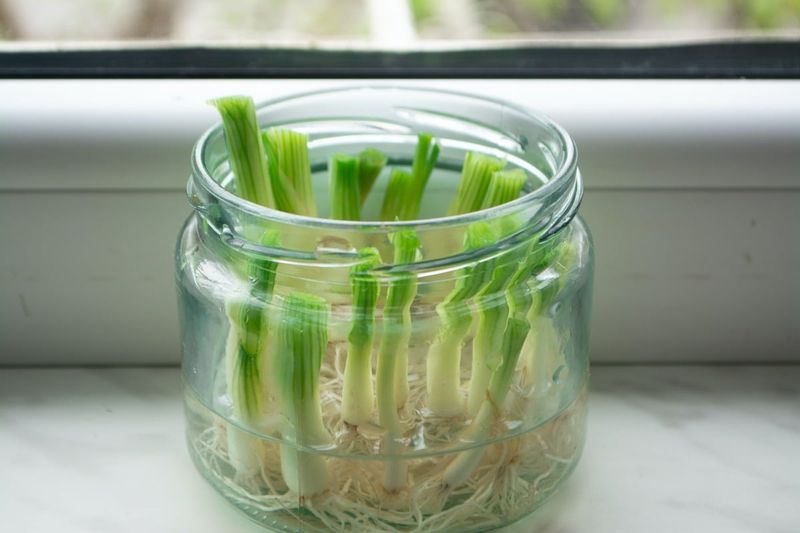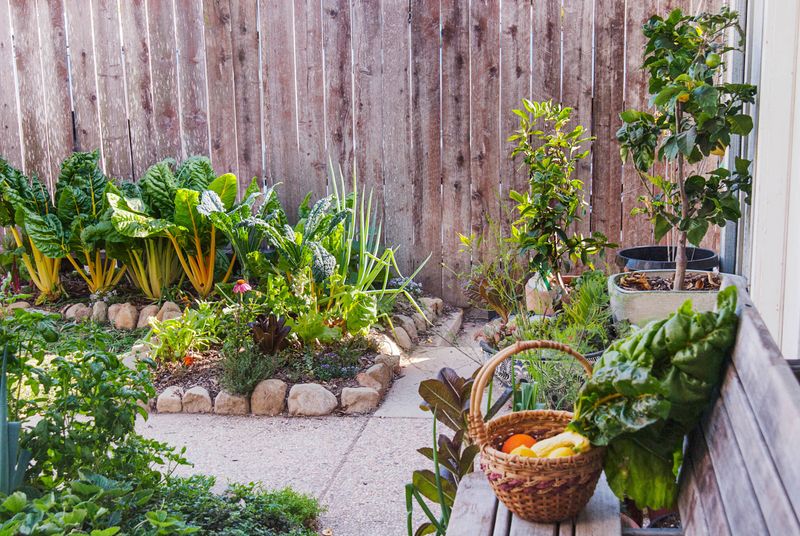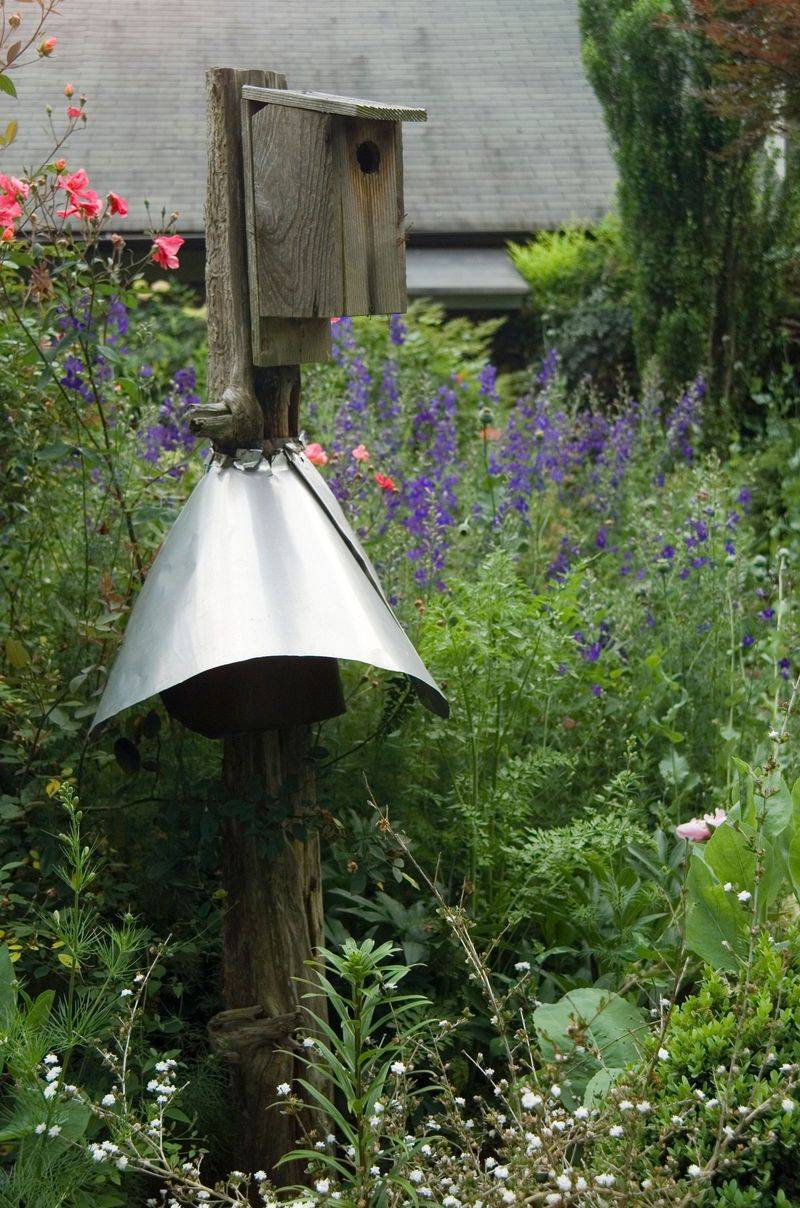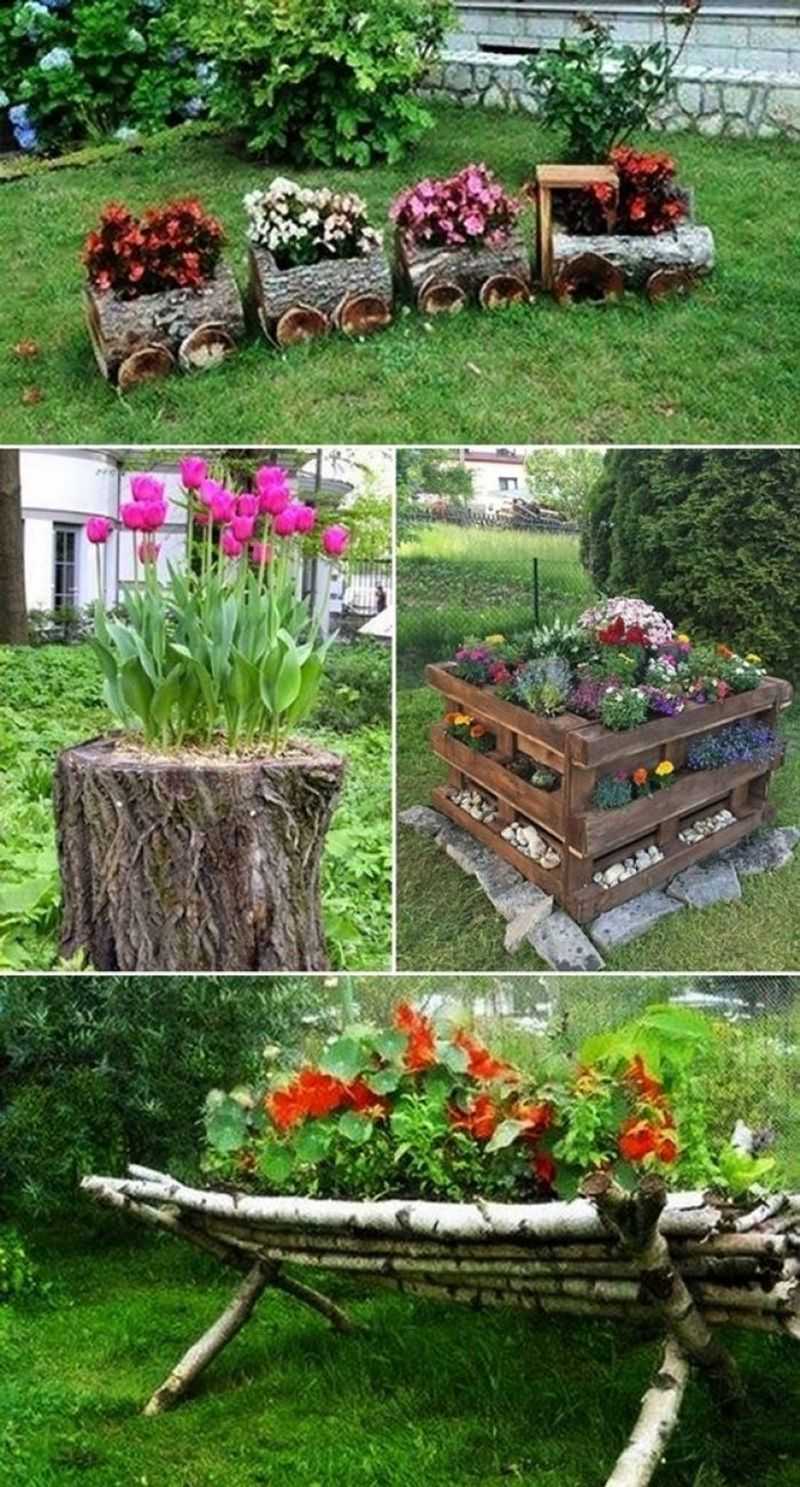Starting a garden doesn’t have to break the bank. With a little creativity and resourcefulness, you can create a beautiful and thriving garden without spending a fortune.
Whether you’re a seasoned green thumb or a budding gardener, these budget-friendly tips will help you cultivate your own patch of paradise.
From using recycled materials to clever planting techniques, this guide is packed with practical advice to inspire your gardening journey.
Get ready to dig in and discover how to nurture your garden from scratch, all while keeping your wallet happy!
1. Use Natural Pest Control
Pests can be a real buzzkill, but chemical solutions aren’t always necessary. Try natural pest control like introducing ladybugs or planting marigolds. It’s how I turned my garden into a pest-resistant zone!
These methods are safe for the environment and your plants. Plus, they add a touch of biodiversity. Not only will you save money, but you’ll also create a healthier garden ecosystem.
Going natural with pest control is like hiring a team of tiny guardians for your plants.
2. DIY Garden Tools
Why buy when you can DIY? Crafting your own garden tools saves money and lets you customize them to fit your needs. One time, I fashioned a trowel from a sturdy spoon. It was surprisingly effective!
Use available materials and unleash your inner inventor. Homemade tools may not win beauty contests, but they certainly get the job done. Personalize each tool, ensuring comfort and practicality.
This way, you’ll have unique equipment that suits your gardening style and budget perfectly.
3. Collect Rainwater
Don’t let those precious raindrops go to waste. Set up barrels to collect rainwater for your garden. This was a game-changer for my water bill!
Position barrels beneath gutters or open areas where they’ll catch the most rain. The water can be used during dry spells, ensuring your plants stay hydrated.
It’s an efficient, eco-friendly method that taps into nature’s bounty. Once you start, you’ll wonder why you didn’t do it sooner. Collecting rainwater is a simple step with a big impact.
4. Grow From Cuttings
Why buy new plants when you can propagate from cuttings? Snip a piece, stick it in water, and watch it grow roots. It’s like magic!
My windowsill is now a nursery for future garden stars. Plants such as mint and basil thrive through this method.
Growing from cuttings not only fills your garden with plants but also offers a sense of accomplishment. It’s budget-friendly and rewarding, perfect for those who enjoy nurturing life from a simple start.
Give it a try and expand your greenery.
5. Seed Swapping with Friends
Who knew socializing could save you money? Organize a seed swap with fellow garden enthusiasts. This is how I ended up with a seed collection that rivals a botanical garden!
Share your surplus seeds and discover new varieties without spending a dime. It’s a fantastic way to diversify your garden and bond with others.
Plus, you never know what hidden gems you might find. Seed swapping is not just economical but also a wonderful social event that enriches your gardening experience.
6. Create a Companion Planting Plan
Plants, like people, thrive with the right companions. Research which plants benefit each other and design your garden accordingly.
Pairing tomatoes with basil was a match made in heaven! Companion planting helps maximize space and enhance growth. It’s an ancient practice that’s both economical and effective.
The right combination can deter pests and improve yields. Creating a companion planting plan is like orchestrating a harmonious symphony in your garden. It requires planning, but the results are worth it.
7. Use Recycled Containers
Why spend on expensive pots when you can give those old tins and buckets a new life? Grab any container lying around and transform it into a quirky planter.
You can also use an old boot for a succulent! Not only does this add character, but it’s also environmentally friendly. Just ensure each container has drainage holes.
The beauty of recycled containers is they don’t have to match, offering a charming eclectic vibe. Plus, they’re a great conversation starter when friends visit your garden.
8. Build a Vertical Garden
Limited space? No problem! Vertical gardens are your best friend. With a bit of creativity, you can grow upwards instead of outwards. My balcony became a green oasis thanks to vertical planting.
Use shelves, trellises, or hanging pots to maximize space. This method is perfect for urban gardeners with minimal square footage.
It’s cost-effective and visually striking, turning any dull wall into a lush garden feature. Building a vertical garden allows you to enjoy greenery without the need for sprawling land.
9. Mulch with Homemade Materials
Mulching might sound fancy, but it doesn’t have to cost a penny. Use leaves, wood chips, or grass clippings as mulch.
It retains moisture, suppresses weeds, and enriches soil. It’s a triple win for your garden. Homemade mulch not only saves money but also helps recycle natural waste.
You’ll be amazed at how effective these simple materials can be. So, gather those leaves and give your garden the love it deserves.
10. Share Gardening Equipment
Why buy when you can borrow? Sharing gardening equipment with neighbors saves money and space. My borrowed wheelbarrow has seen more action than some gym memberships!
Pool resources and access a wider range of tools without the expense. It fosters community spirit and encourages collaboration. You’ll forge connections and exchange tips along the way.
Sharing is caring, especially when it comes to gardening. It’s not just about saving money; it’s about building relationships that make gardening more enjoyable.
11. Plan Your Garden Layout
Before planting, take the time to plan your garden layout. Sketch your ideas and consider factors like sunlight and plant compatibility. It’s how I avoided the great sunflower shade debacle of 2021!
A well-thought-out plan maximizes space and enhances growth. It’s a strategic step that saves money by preventing costly mistakes.
Planning your garden layout is like crafting a blueprint for success. It requires patience and foresight, but the payoff is a flourishing garden that’s both beautiful and functional.
12. Use Second-Hand Materials
Why buy new when second-hand will do? Scour garage sales, thrift stores, or online marketplaces for garden materials. I snagged a treasure trove of bricks for a fraction of the cost myself!
Using reclaimed items not only saves money but adds character to your garden. It’s an eco-friendly choice that reduces waste.
With a little creativity, second-hand materials can transform your garden into a unique haven. Embrace the charm of pre-loved items and let your garden tell a story of sustainability.
13. Choose Perennial Plants
Perennials are the gift that keeps on giving. Plant them once, and they’ll return year after year with minimal effort. Believe me, you will marvel at the perennial border that bursts into color each spring.
These plants are an economical choice for any garden. They save money on annual replanting and provide consistent beauty.
From cheerful daisies to elegant lilies, perennials offer a diverse range of options. Choosing perennial plants is like investing in a garden that grows more rewarding over time.
14. Explore Native Plant Options
Native plants are perfectly adapted to your local climate, making them low-maintenance and cost-effective. After discovering native varieties, my garden thrived like never before!
These plants require less water, fertilizer, and pest control. They support local wildlife, promoting a balanced ecosystem. Exploring native plant options is an adventure in discovering nature’s local wonders.
It’s a budget-friendly choice that celebrates regional biodiversity. By choosing native plants, you’re creating a garden that’s in harmony with its surroundings and easier to maintain.
15. Start Composting
Composting is nature’s way of recycling and rewarding you with rich, healthy soil. It’s like a magical process where yesterday’s leftovers become tomorrow’s plant food.
By creating a compost pile, you recycle kitchen scraps into nutrient-rich soil. My first compost pile had a mind of its own, but it’s worth the initial chaos!
Start with vegetable scraps and avoid meat or dairy. Your plants will thank you with lush growth. Plus, you’ll reduce waste and save on buying fertilizers.
Composting is a win-win for your garden and the planet.
16. DIY Plant Supports
Plants sometimes need a little support, just like we all do. Instead of buying expensive stakes, create your own from sticks and twine. My DIY plant supports have stood the test of time and windstorms!
This simple solution ensures your plants grow upright and strong. It’s a budget-friendly approach that’s both practical and effective.
Plus, involving the kids in creating supports adds a family-friendly element to gardening. Build your plant supports and watch your garden flourish with a personal touch.
17. Attend Free Gardening Workshops
Learning doesn’t have to be expensive. Seek out free gardening workshops or online webinars. You’re able to enter local workshop and leave with a head full of knowledge and a bag of free seeds!
These sessions are excellent opportunities to learn new skills and techniques. They also connect you with fellow gardeners, expanding your network.
Gardening workshops are like attending a free university for plant lovers. The insights you gain are invaluable, and the friendships you form enrich your gardening journey.
18. Use Kitchen Scraps to Grow
Turn your kitchen into a mini nursery by regrowing plants from scraps. I’ve successfully revived lettuce and spring onions this way!
Place scraps in water and watch them sprout new life. It’s a fun and educational activity for all ages. Using kitchen scraps reduces waste and provides fresh produce at a fraction of the cost.
This method is a practical way to extend the life of your groceries. Embrace the magic of regrowth and add an element of wonder to your garden.
19. Embrace Minimalism in Design
Less is more when it comes to garden design. Focus on a few key plants and clean lines for a serene space. Clutter your garden, and decluttering was life-changing!
Minimalism reduces costs and maintenance while creating a tranquil environment. It emphasizes quality over quantity, allowing each plant to shine.
Embracing minimalism in your garden design is like creating a peaceful retreat. It’s a thoughtful approach that promotes relaxation and highlights natural beauty without overwhelming the senses.
20. Create a Wildlife-Friendly Garden
Welcome nature’s visitors by creating a wildlife-friendly garden. Add birdhouses, bee hotels, and water features. Your garden will buzz with life, thanks to these additions!
Not only do they enhance biodiversity, but they also provide natural pest control. A garden that attracts wildlife is a dynamic and lively space. It’s a budget-friendly way to enrich your garden’s ecosystem.
Creating a wildlife-friendly garden invites harmony and vitality, making it a joyful place for both humans and critters alike.
21. DIY Garden Decorations
Unleash your inner artist with DIY garden decorations. Paint rocks, craft wind chimes, or create stepping stones. Make your garden a colorful gallery of personal creations!
These decorations add charm and personality without breaking the bank. Use materials you already have, making it a budget-friendly project.
DIY decorations turn your garden into a unique reflection of your style. They offer endless possibilities for creativity and customization. Craft your garden decor and let your imagination shine in every corner.

